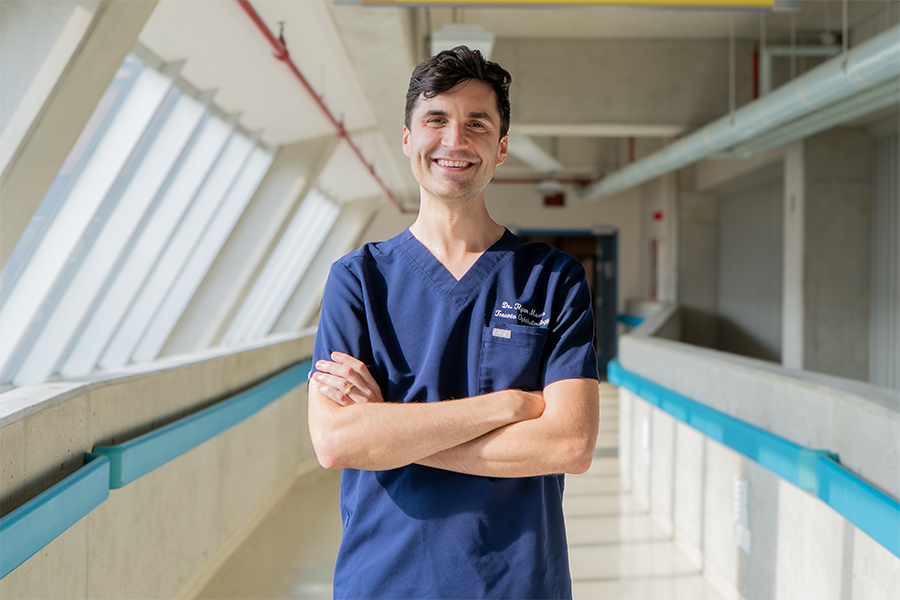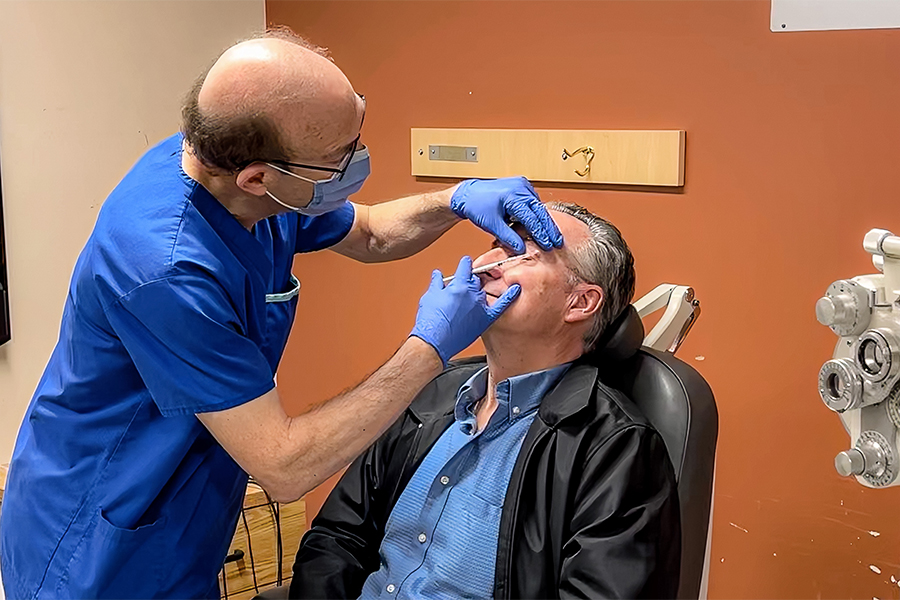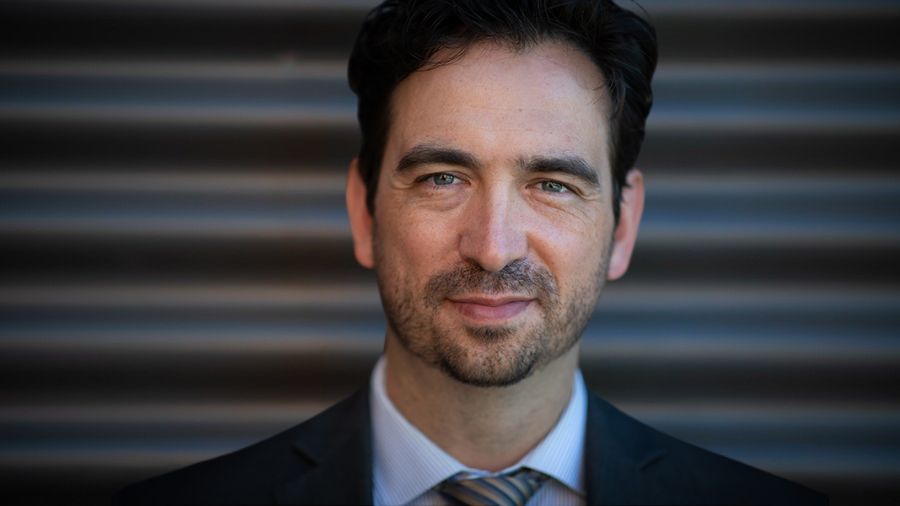Zaid Syeed, pictured with his mother, Zeenath Fathima, was amazed after the six-week biofeedback training to learn that his vision was 20/20 and he was reading much faster. (Photo: UHN)
About three years ago, at the age of nine, Zaid Syeed noticed something was wrong with his vision.
He was having a hard time reading small text on paper, and he couldn’t see the whiteboard clearly in class, despite wearing his glasses.
“We first found out about Zaid’s condition because he couldn’t see certain letters during a regular eye examination,” says Zeenath Fathima, Zaid’s mother. “The letters appear blank for him.”
After visiting the eye specialist, his vision seemed to be deteriorating at a faster pace. So, Zaid’s family doctor referred him to The Hospital for Sick Children, where he was diagnosed with foveal hypoplasia, a condition in which there is a lack of full development of the fovea, which is a small depression in the retina, at the back of the eye.
The fovea is responsible for clear and sharp vision, and the malformation prevents it from doing its job.
“Even after trying out different glasses and aids, Zaid still couldn’t see very clearly,” Zeenath says. “The doctors even said his vision will never be 20/20.
“It was devasting hearing the news.”
Doctors suggested that Zaid see the team at the Low Vision Rehabilitation Clinic at UHN’s Donald K. Johnson Eye Institute, a world leader in vision research and clinical care.
After Zaid visited the Low Vision Rehabilitation Clinic and was able to have a full analysis of his eye condition, Dr. Monica Daibert-Nido, a clinician-investigator at the institute, recommended biofeedback therapy, a revolutionary treatment that uses visual imagery to retrain the brain, to use healthy parts of the eye.
“The treatment is built upon the concept of neuroplasticity, where the brain can reset regardless of the patient’s age,” says Dr. Daibert-Nido.
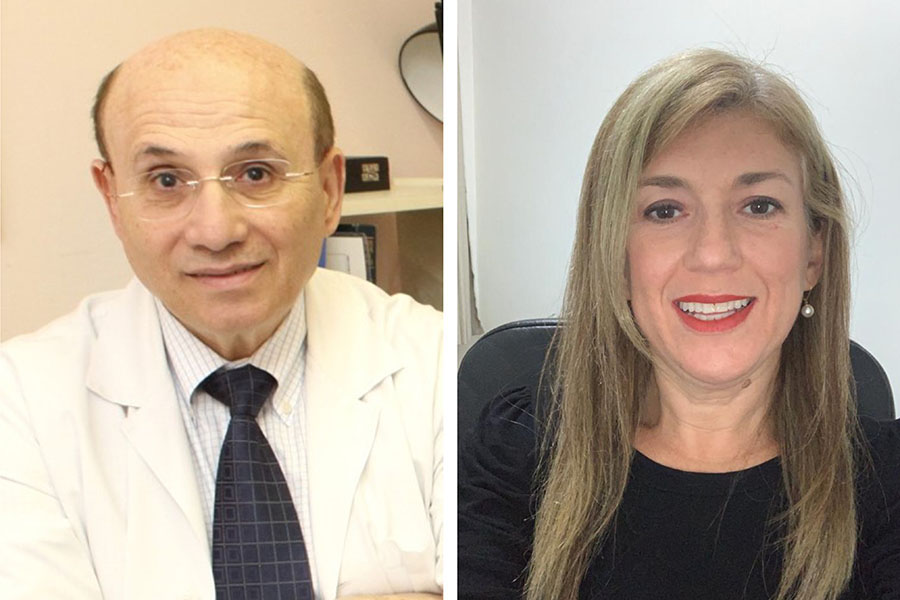
Patients receive a 20-minute session every week for a period of six weeks, looking into a microperimeter, a device that projects a light, along with a beeping sound, for the patients to follow with their eyes.
During the therapy session, a member of the Low Vision Rehabilitation Clinic monitors and alters the light to ensure that unused areas of the eye become active, motivating the brain to use the remaining vision.
When Zaid came to his follow-up visit only one week after finishing the six-week biofeedback training, he was amazed to learn that his vision was 20/20 and he was reading much faster. He can now see certain letters on the whiteboard that he couldn’t see before. He can also read stop signs and enjoy the beautiful outdoor scenery.
“After biofeedback therapy, many patients tend to see a significant improvement in their vision,” says Dr. Samuel Markowitz, the Director of the Low Vision Program and a clinician-investigator at the Donald K. Johnson Eye Institute. “They are often able to read two to three lines better on the eye chart, as well as reading much better and faster in their everyday lives.
Early intervention is crucial in treating low vision conditions, yet many parents may not catch early warning signs of vision impairment in young children.
“You need to be a little bit more persistent and listen to your kids, to know and understand what they might be experiencing, and get them the right help,” says Zeenath. “That’s why we are speaking out about Zaid’s story because we want other families to know that there is help out there.”
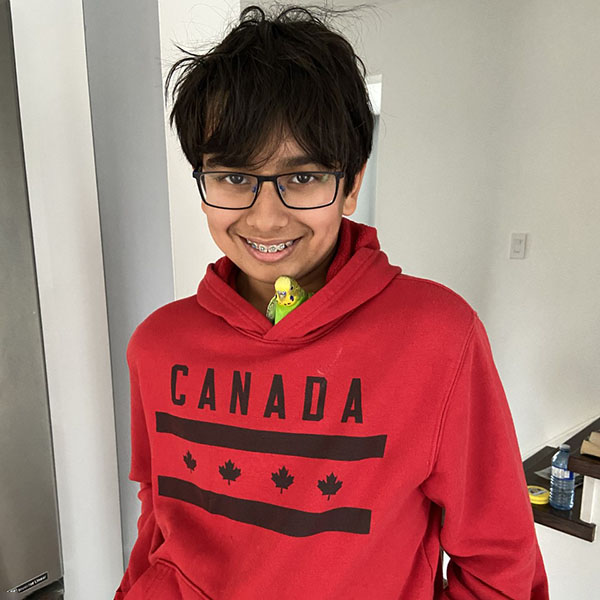
Luckily, Zaid received a lot of support and love from his parents, friends, and teachers, who were all very helpful and understanding of his condition.
“For me, working in this field, I want to spread awareness about low vision conditions, both in the health care field and to the public,” says Dr. Markowitz. “It’s important that people know what vision rehabilitation can do because it can really change people’s lives.”
In addition to treating patients with biofeedback therapy, Dr. Markowitz and Dr. Daibert-Nido are also investigating other novel treatments, such as the use of virtual reality for vision rehabilitation, in order to help more patients like Zaid.
“I want to say to all the kids who also have similar low vision conditions not to be afraid, and everything is going to be okay,” says Zaid, an aspiring game developer.
